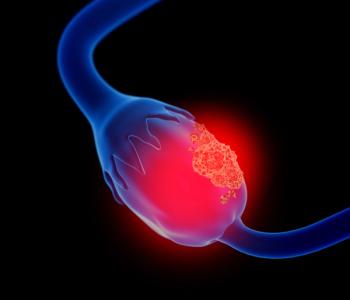
Scalp Cooling Therapy Effective in Reducing Chemotherapy-Induced Alopecia
Scalp-cooling therapy (SCT) is a treatment that may help reduce hair loss in women with breast cancer who are experiencing chemotherapy-induced alopecia (CIA). A study found that many women who used SCT were satisfied with the results, but the treatment is expensive, making it necessary for more advocacy by health care professionals to make SCT accessible.
Scalp cooling therapy (SCT), an effective treatment method to reduce chemotherapy-induced
Approximately 65% of patients that receive
In the late 1970’s, scalp cooling was first introduced as a preventative method towards CIA and, years later in 2015, the FDA approved the first SCT device for patients with
Researchers conducted a retrospective review that included recipients who were funded by a nonprofit organization to receive SCT from September 2020 through August 2023.1 Participant results were categorized as either the “completed” group or the group that “stopped” therapy. There were 108 of the total 139 patients that completed SCT (78%) and only 66 (47.4%) completed a follow-up post-capping survey.
The review included 139 all female participants that received funding for treatment and 119 of them were previously diagnosed with breast cancer (85.6%). Participant ages ranged from 22 to 75 years with the average age being 47.02 years old.
Hair retention was self-reported in the follow-up survey, ranging from not enough noticeable hair loss (43/66, 65.2%), thinning or bald spots (12/66, 18.2%), loss of most hair (10/66, 15.1%), or no response (1/66, 1.5%). The total amount of respondents that classified their experience with SCT as satisfactory was 55 of the 66 (83.3%), and 60 patients reported they were likely to suggest SCT to others (90.9%).
Data found patients that received non-anthracycline chemotherapy (mainly taxane-based chemotherapies; P < .0001) or utilized machine (vs manual) SCT (P = .025) were more likely to complete SCT.
Common adverse effects have been described as feelings of coldness, neck and shoulder discomfort, headaches, scalp pain, forehead pain, nausea, and/or light-headedness and dizziness but they were all temporary.2
Despite the positive feedback patients reported on SCT, access to machines is limited due to the high expense. Additionally, most underserved populations occupy communities that are located further away from SCT treatment centers, further hindering access. While some costs may be reimbursed by differing insurance plans for the FDA-approved SCT systems, others are not, and expenses effect access, creating an important issue for many patients.2
Furthermore, many trials that have been conducted in the past fail to include an equal number of Black patients to White patients, and completely exclude
Patients with CIA caused by breast cancer expressed high satisfaction rates after receiving SCT treatment, but additional research must consider more representation of Black patients and minorities in clinical trials. Results highlight the necessary improvements in SC devices that manufacturers should consider when applying efficacy to diverse patient populations. Physicians need to advocate for patient access of SCT because, even with subsidies for low-income populations, there are limited use of techniques in underserved populations, like in the cancer center, illustrating a disparity in care.
References:
1. Novice M, Rose L, Novice T, et al. Expanding access to scalp cooling therapy: a review of scalp cooling outcomes in patients who received financial assistance from a nonprofit organization. Arch Dermatol Res. 2024;316(2):66.
2. Wikramanayake TC, Haberland NI, Akhundlu A, Laboy Nieves A, Miteva M. Prevention and treatment of chemotherapy-induced alopecia: what is available and what is coming?. Curr Oncol. 2023; 30(4):3609-3626.
3. Dilawari A, Gallagher C, Alintah P, et al. Does scalp cooling have the same efficacy in black patients receiving chemotherapy for breast cancer?. Oncologist. 2021;26(4):292-e548.
Newsletter
Stay ahead of policy, cost, and value—subscribe to AJMC for expert insights at the intersection of clinical care and health economics.







































